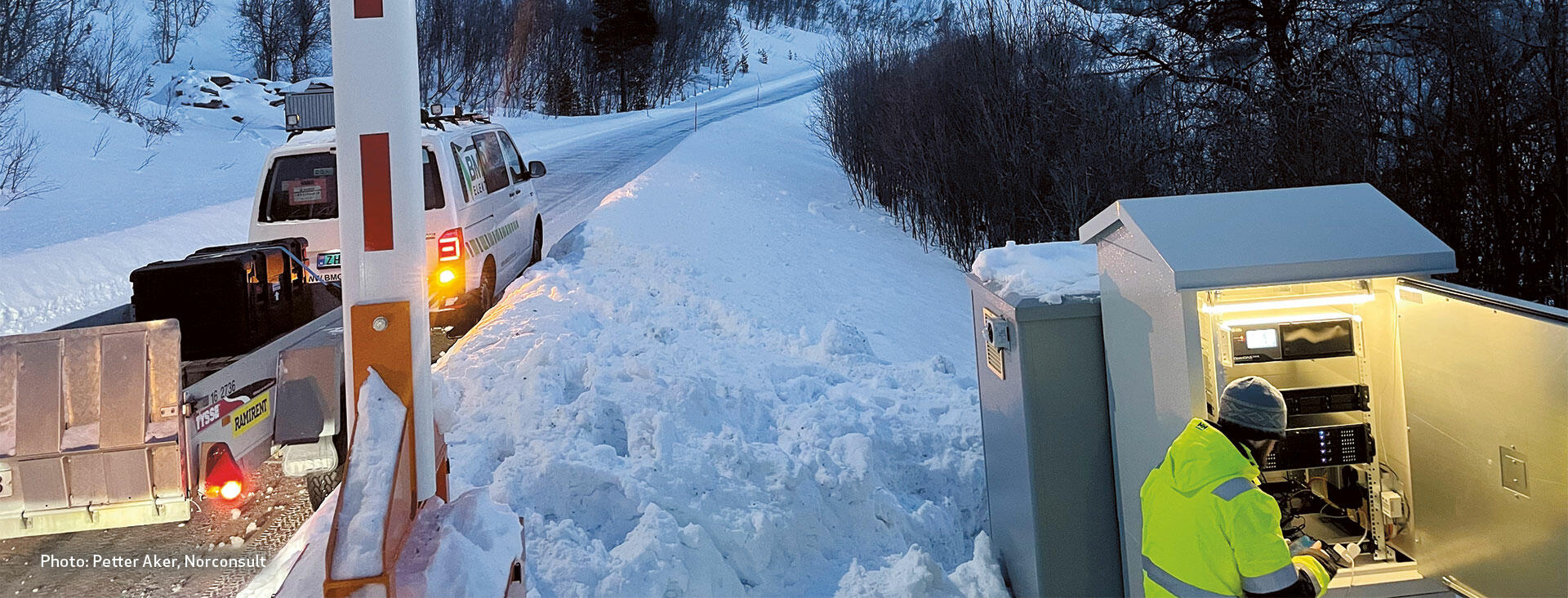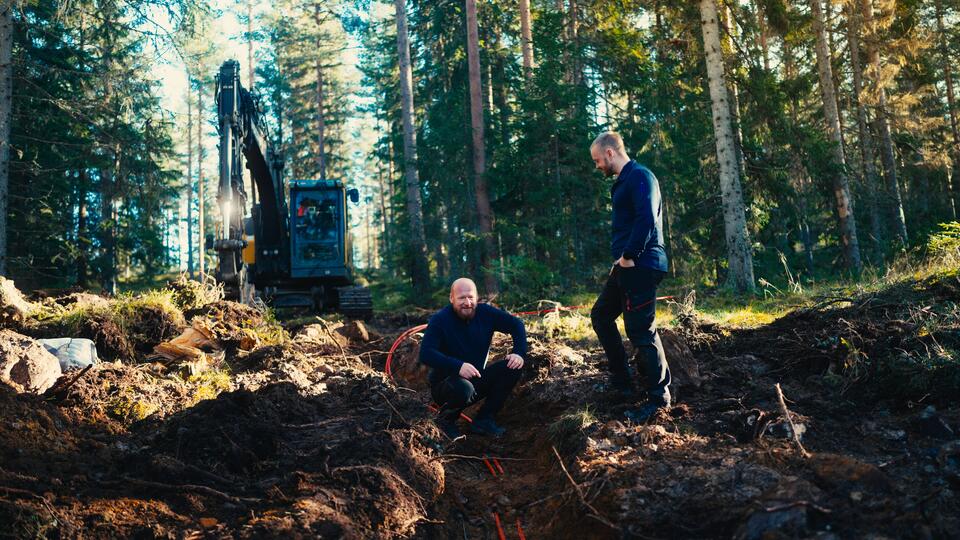Fiber technology makes the roads safer

Fiber optic measurements are socially beneficial in several areas of application. Avalanche warning is one of the areas where this technology is now being used. Avalanches are a major societal challenge both in Norway and other parts of the world.
We at NORSAR use our expertise to test and develop technology that combines the measurement of vibrations and fiber optics. In 2022, together with our partners, we have tested a new avalanche and traffic warning system in Northern Norway with promising results. In addition, we have started the construction of a large-scale test facility for further development of fiber technology.
Fiber optic measurements are one of the technologies NORSAR uses to measure vibrations in the underground, also called Distributed Acoustic Sensing (DAS). For this we use fibre-optic cables, for example ordinary telecom cables or more specialized cables. The method involves sending light into the fiber cables. When the cable is disturbed by the surroundings of e.g. vibrations, it will affect light reflections on the part of the cable in question. The reflections from high-frequency light pulses have various properties that can be analyzed to detect and locate events along the cable.
A fibre-optic measurement system is very sensitive and can have a sampling density down to 1 meter over up to 170 kilometers. These measurements are comparable to earthquake measurements and real-time detection of seismic events, with which we have extensive experience from our large network of seismic stations.
Automatic notification of landslides and car traffic
In 2022, we have had the pleasure of continuing the collaboration with Norconsult and Alcatel Submarine Networks, Norway on service development to ensure an avalanche-prone road for Troms and Finnmark County Municipality. The project's primary task is to find a solution that can detect if an avalanche reaches the road and detect if there are cars in the area. In 2022, we have verified that our automatic detection algorithms can detect avalanches and cars. Analysis of the signals also gives promising results for being able to distinguish vehicles from one another. The next step is optimization of the system. In 2023, we will test the use of machine learning to increase accuracy and minimize false alarms. Learn more about the project here.
The use of fiber optic cables has major advantages in this field compared to more traditional methods such as radar, geophones and cameras. The fiber cable is buried in the ground, is little exposed to physical strains and works regardless of the weather. One system can cover many possible avalanche points in an area. Avalanches are a societal challenge that exposes people to risk and reduces accessibility. The county roads in Troms and Finnmark alone have around 200 avalanche points, while there are around 1,500 avalanche points nationwide. Climate change means an increased risk of avalanches. Physical protection of all avalanche points is expensive. A fibre-optic avalanche warning system can therefore both save lives and save society from large costs.
New fiber optic test center at Stendammen
In 2022, NORSAR started the development of a large-scale array of dedicated fiber cables. The fiber plant is co-located with the seismic station around Stendammen on Løten. The station has long, high quality data series that are a good calibration for the new facility and its tests. The new fiber facility will provide opportunities for even more use and development of fiber technology and contributes to solutions within many societal challenges.
The fiber plant is financed by the Norwegian Research Council and defined as a national research infrastructure. The plant will become part of the European infrastructure ECCSEL ERIC. We look forward to being able to offer the facility to partners during 2023.
 Fiber cables are buried at the test center at Stendammen. Photo: Vjus
Fiber cables are buried at the test center at Stendammen. Photo: Vjus
